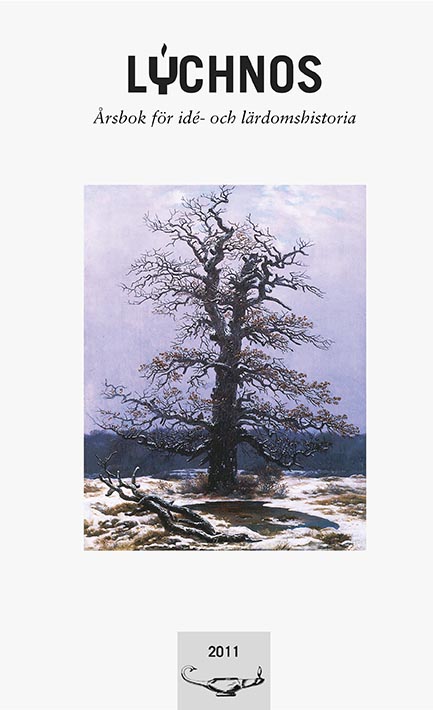Humboldt och skriften
Om bildningens mediala förutsättningar
Abstract
The article treats Wilhelm von Humboldt and the concept of self-formation (Bildung). It is argued that this concept – essential in Humboldt’s thinking – can be understood in close relation to conditions shaped by changes in information technology. Humboldt’s time is characterized by what has been called a ”media revolution”. Literacy and extensive reading became increasingly common and the medium of writing gained a cultural dominance it did not have before. While describing the main features of this process, it is also argued that this media revolution is discernible in Humboldt’s texts. The discussion focuses on the most important work of Humboldt’s youth, The limits of state action (1792). This text does not deal with the medium of writing on a manifest level, but with the relationship between the individual and the state. On closer examination, however, it is possible to interpret the text as an expression of the increasing dominance of the medium of writing. The ideas about self-formation presented in The limits of state action are shown to have their origin in Humboldt’s own biography. In his own life Humboldt was apparently a keen practitioner of the new form of extensive reading typical of the period. The article shows that biography and educational theory merge and that the medium of writing is an important link between the two. New ways of reading and new forms of reader-subjectivity are reflected in Humboldt’s personal life as well as in the concept of self-formation. It is, in different ways, shown how Humboldt’s reasoning is marked by the ongoing changes in information technology. The article concludes with some short remarks where attention is paid to the intense discussion about Humboldt and his educational ideals in our time. It is rarely noticed in this discussion that today’s conditions of information technology are radically different compared to the time in which The limits of state action was written.
Downloads
Publicerad
Nummer
Sektion
Licens
This work is licensed under a Creative Commons Attribution 4.0 International License. The copyright for the work published in Lychnos remains with the authors.


